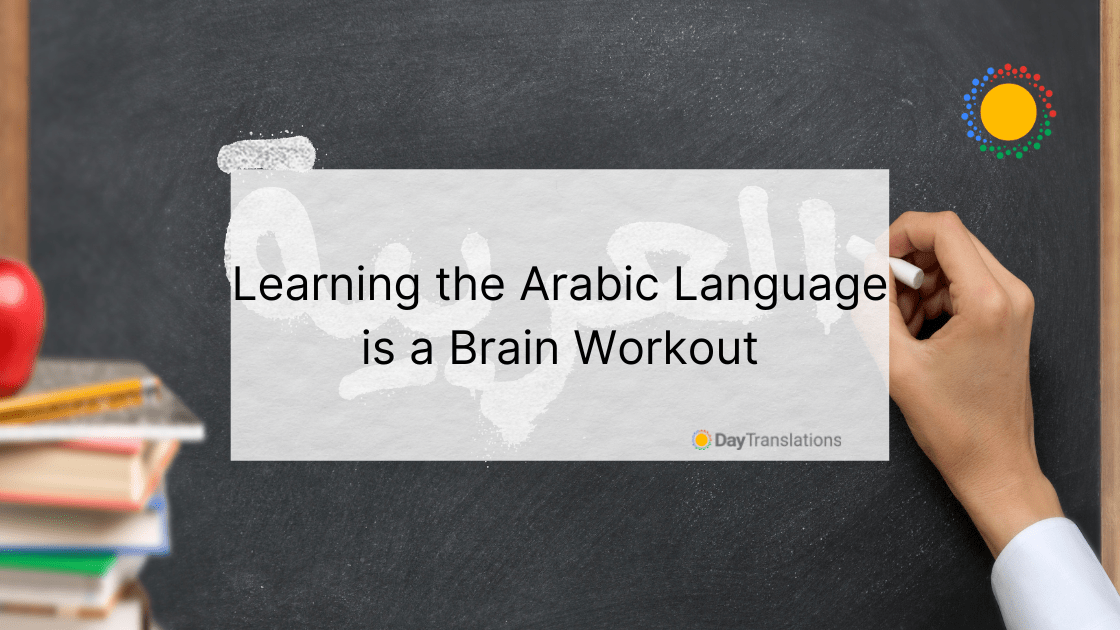Learning a new language is a skill that many people want to have. One of the most fascinating languages to learn is Arabic. Ranking as the third most commonly spoken languages in the world, speaking Arabic is certainly a useful skill to have. However, it is also one of the most difficult.
It is known that when a person learns a language, various areas of the brain are developed. Studies have shown that the size of a person’s brain can increase when learning a new language. The more a person learns another language, the more improvement there is in memory function. Cognitive health is also developed.
The brain grows when you learn a new language
Swedish scientists have been able to see a marked difference in those who are learning a new language compared to those who didn’t. Using magnetic resonance imaging technology, the Swedish scientists have found that those who studied Arabic (among other languages) in their study had an increase in the hippocampus and the areas related to language learning in the cerebral cortex.
While this is great news for linguists and lovers of languages, it’s not always easy to learn a new language. In fact, some languages are known to be harder than others to learn. The Arabic language is one of them.
Arabic is much harder than others
Apparently, when it comes to learning a foreign language, not all are created equal, at least in terms of how the brain processes the new language. In fact, scientists have found that it seems like learning Arabic poses a different type of mental workout for the human brain. A person’s brain is actually forced to work harder when learning Arabic compared to other foreign languages.
This is probably a reason why Arabic poses such a challenge for many non-speakers to learn the language, especially when doing Arabic document translation. It seems that reading Arabic is considered hard or difficult for the brain.
Highest level of difficulty
According to the Foreign Service Institute (FSI) Arabic is considered one of the most difficult languages to learn for those who use English as their first language. Arabic ranks with a Category 5 difficulty level in for one order to have proficiency in it. This translates to at least 88 weeks or at least 2,200 hours of study. Arabic shares the same level of difficulty as the Chinese languages of Cantonese and Mandarin, as well as Japanese and Korean.
Need to be detail-oriented
Why is learning to read Arabic such a mental Olympics? Researchers from the University of Haifa in Israel have determined that when it comes to learning Arabic, the brain needs to be able to focus and process the various little details that are evident in the written language.
For example, the alphabet has only three vowels out of the 28 letters. These vowels have different variations, and so do a third of the consonants. Many of the consonants share the same shapes since there are only a total of 15 shapes used for the 28 letters. To distinguish the similar looking letters, a system of dots is implemented to provide differences between the letters and words.
What does this mean for those who want to read Arabic? It means that readers have to be very careful when reading Arabic because the placement of a dot over a shape changes the way it is used. This makes for very slight nuances between words. It seems like speed reading isn’t always possible when it comes to the Arabic language, especially when trying to learn it. To help navigate these nuances, using the best app to learn Arabic can offer a structured way to break down the complexities of the script.
To use the right or left hemisphere
Science tells us that when learning a language, both sides of the brain are engaged. At the same time, when learning a new activity, it is the right side of the brain hemisphere that is engaged. However, due to the multiple number of details involved in deciphering the Arabic language, it is the left side of the brain that is particularly challenged. This is because the left side of the brain is in charge of distinguishing the details, which the written Arabic form is riddled with. The left hemisphere of the brain focuses on local details, while the right hemisphere tends to look at the big picture or the global aspect of whatever it sees.
This is one reason why scientists believe the Arabic language proves to be difficult to learn. Unlike like other languages such as English or even Hebrew where both hemispheres of the brain are involved in order to decipher it, when it comes to Arabic, it is just the right side hemisphere at work.
These findings help explain why learning the Arabic language is quite difficult for many people. However, it doesn’t have to be a deterrent to mastering one of the oldest and most fascinating languages in the world.












Sorry, the comment form is closed at this time.